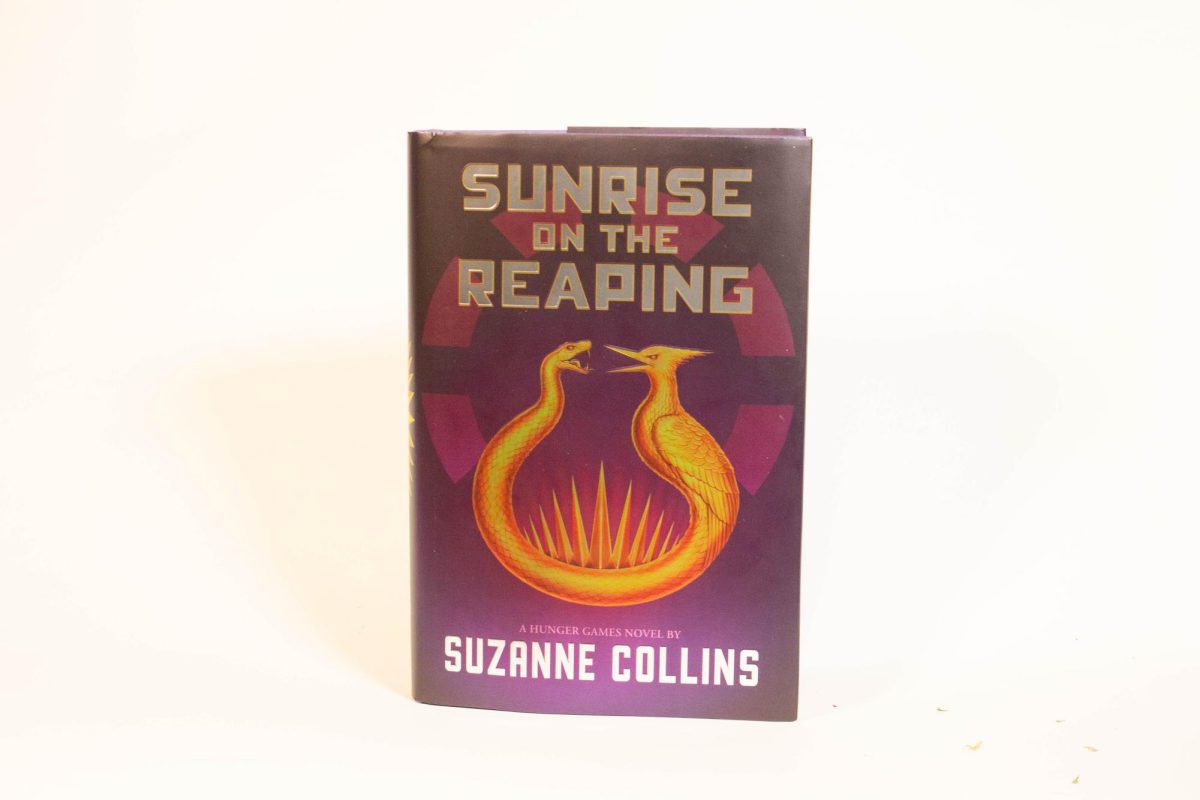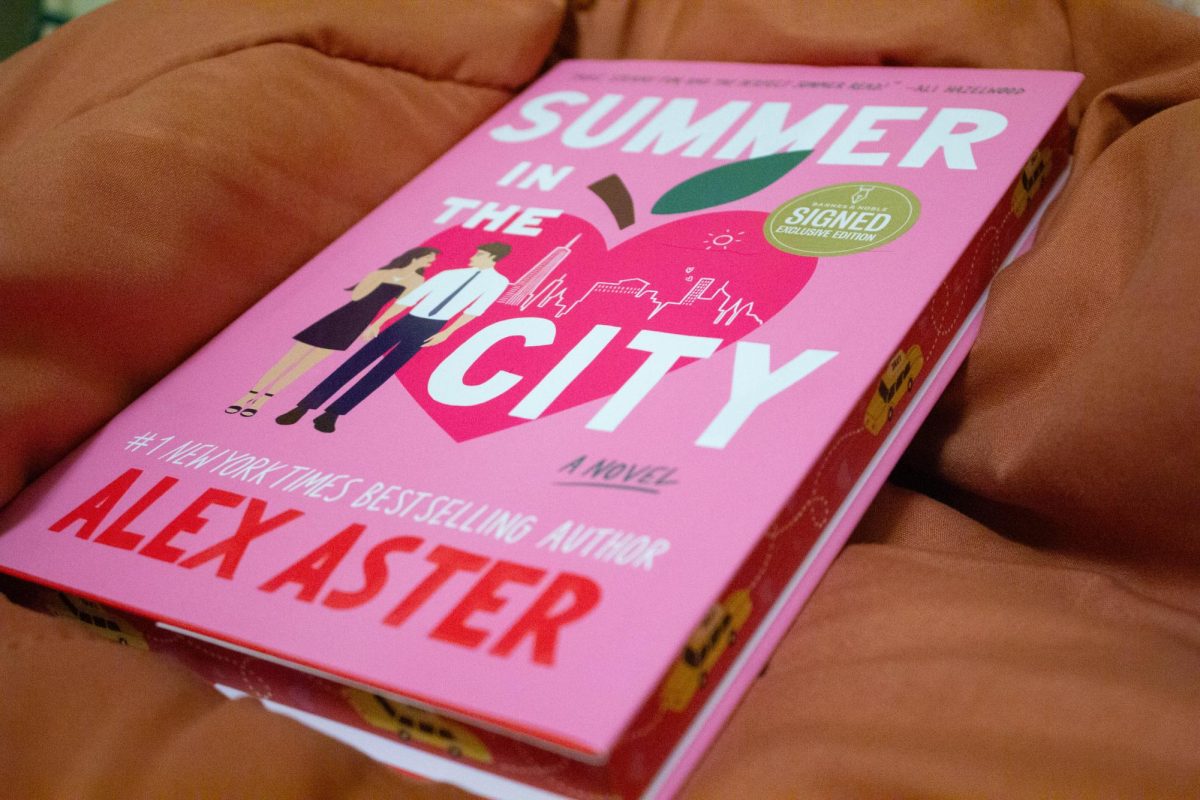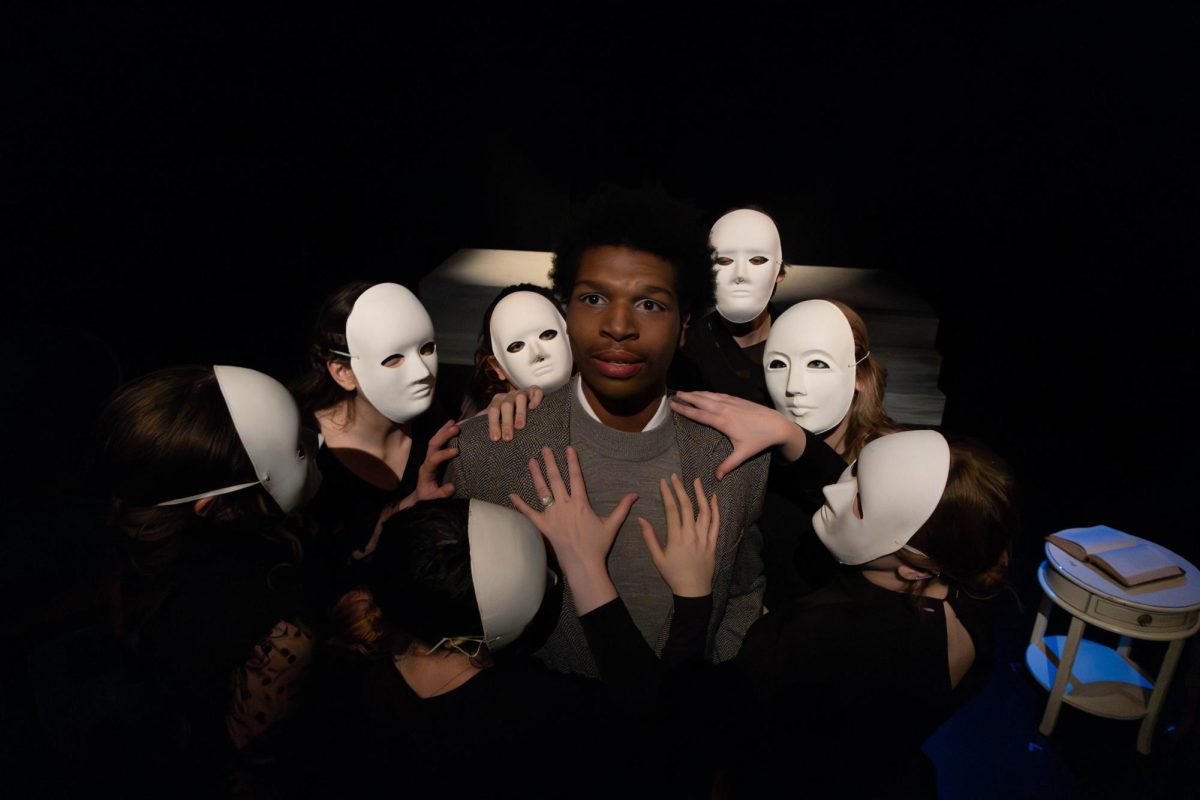This review contains spoilers for “Sunrise on the Reaping,” “The Hunger Games,” “Catching Fire,” “Mockingjay” and “Ballad of Songbirds and Snakes.”
48 tributes enter the arena for the 50th annual Hunger Games, but only one will leave alive in Suzanne Collins’ book “Sunrise on the Reaping.” This book is the second prequel to “The Hunger Games” trilogy, which takes place in the country of Panem.
In this dystopian country there are 12 districts, which are tasked with providing different resources for the country. The Capitol, separate from the districts, is in charge of running the entire nation. To prevent rebellions in the districts, The Capitol holds games where two tributes from every district must fight until only one remains alive. These games serve as punishment for the districts and entertainment for The Capitol.
In the newest release, “Sunrise on the Reaping,” the games have a twist. Twice as many tributes will be entering the arena, and Haymitch Abernathy is one of the male tributes from District 12.
This book felt like a bridge between the original trilogy and the first prequel, “Ballad of Songbirds and Snakes.” It just brings the entire series together and is a truly spectacular addition for a number of reasons.
The first reason is the amount of character appearances and connections from the first trilogy. For example, Mags, who volunteers to be a tribute in the 75th Hunger Games in “Catching Fire,” is introduced as Haymitch’s mentor in “Sunrise on the Reaping.” Other tributes from the 75 games also make unexpected appearances.
These are not only characters who have connections to the original trilogy. Burdock Everdeen, who is the father of the original trilogy’s protagonist Katniss Everdeen, is one of Haymitch’s closest friends. This makes the parallels between Haymitch and
Katniss much more heartbreaking.
Another amazing aspect of the book is how Haymitch isn’t reaped for the games in a fair way. That would make Peeta, the male District 12 tribute from the original series, the only District 12 victor to be reaped properly. This is because it was revealed that Haymitch was only put in the games because he stepped in to defend his girl from the Peacekeepers, The Capitol’s enforcers.
Then Lucy Gray, the victor of the 10th annual Hunger Games from “Ballad of Songbirds and Snakes,” was only reaped for the games because the mayor rigged it. In the trilogy, Katniss was only in the games because she volunteered for her sister. It is such a unique aspect that those three victors have in common.
Additionally, the last few pages added so much clarity and closure for the series as a whole. It revealed that Haymitch calling Katniss sweetheart was never meant in a derogatory way, compared to what Katniss believed.
It also explains why Haymitch protected Katniss more than Peeta in “Catching Fire,” as she was his best friend’s little girl. It also gave the readers context as to why Haymitch owns geese at the end of series.
Lastly, many fans of Suzanne Collins theorize that she only writes when she has something to say. To put it simply, she had a lot to say. She covered topics like propaganda, media control and so much more, and she tied it perfectly to the story that she crafted.
For example, when one of the tributes is killed during the opening ceremony for the games, Haymitch carries their body all the way to President Snow. However, the cameras were cut before the tributes death was streamed to the districts.
Overall, this book gives so much closure to readers of the original trilogy as well as much needed information to connect all the books together in the most cohesive way.









